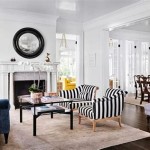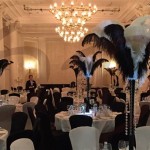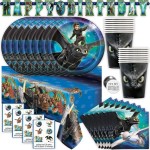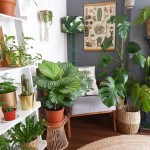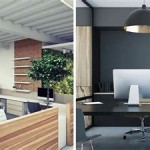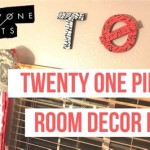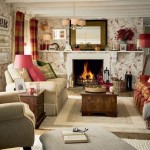What Is Traditional Contemporary Decor?
Traditional contemporary decor, also known as transitional style, is a harmonious blend of classic and modern design elements. It seamlessly bridges the gap between traditional aesthetics, characterized by formality, elegance, and historical influences, and contemporary design, known for its clean lines, simplicity, and minimalist approach. This style embraces the best of both worlds, creating a visually appealing and comfortable environment that feels both timeless and up-to-date.
Key Elements of Traditional Contemporary Decor
Traditional contemporary decor is characterized by a careful balance of classic and modern details. Here are some key elements that define this style:
1. Classic Foundation with Modern Twists
The foundation of traditional contemporary design is typically based on traditional elements, such as ornate moldings, symmetrical layouts, and architectural details borrowed from historical periods. These elements provide a sense of history, grandeur, and timeless elegance. However, traditional contemporary decor incorporates modern twists to these classic elements, creating a fresh and dynamic aesthetic. For instance, a traditional fireplace mantel may be adorned with modern artwork or a sleek, minimalist clock.
2. Neutral Color Palette with Pops of Color
Traditional contemporary decor typically favors a neutral color palette, often using shades of white, beige, gray, or black as a foundation. These neutral tones provide a sense of calm, sophistication, and allow the other elements in the space to shine. However, pops of color are strategically incorporated to add visual interest and personality. These pops of color can be seen in accent furniture, artwork, throw pillows, or textiles.
3. Blending of Textures and Materials
Traditional contemporary decor embraces a blend of textures and materials. This can include incorporating natural materials like wood, stone, and leather alongside modern materials such as polished metals, glass, and synthetics. The combination of these textures creates a sense of depth and visual interest, while also maintaining a cohesive and balanced environment.
4. Furniture with Both Traditional and Modern Elements
Furniture in traditional contemporary decor often features a mix of traditional and modern elements. Traditional pieces might include ornate carvings, tufted upholstery, or claw-foot designs. These traditional pieces are balanced with modern furniture featuring clean lines, minimalist silhouettes, and sleek finishes. The key is to ensure that the furniture pieces complement each other while maintaining a consistent aesthetic.
5. Ample Natural Light and Open Spaces
Traditional contemporary decor emphasizes ample natural light and open spaces. Large windows allow natural light to flood the room, creating a bright and airy atmosphere. Open floor plans promote a sense of spaciousness and flow, while also allowing for flexible furniture arrangements. The combination of natural light and open spaces enhances the feeling of modernity and spaciousness within the traditional framework.
6. Art and Accessories with a Traditional Contemporary Aesthetic
Art and accessories play a significant role in completing the traditional contemporary look. Artwork can range from traditional landscapes and portraits to abstract modern pieces. Accessories, such as lamps, vases, and decorative objects, should complement the overall aesthetic. The key is to choose pieces that reflect a blend of classic and modern influences, contributing to the overall harmony of the space.
Key Benefits of Traditional Contemporary Decor
Traditional contemporary decor offers a variety of benefits that appeal to a wide range of design preferences:
1. Timelessness and Versatility
Traditional contemporary decor has a timeless quality that transcends fleeting trends. The blend of classic and modern elements ensures that the style remains relevant and appealing for years to come. Its versatility allows it to adapt to various architectural styles and personal preferences, making it a suitable choice for a wide range of spaces.
2. Elegance and Sophistication
Traditional contemporary decor exudes a sense of elegance and sophistication. The use of high-quality materials, intricate details, and balanced proportions creates a refined and luxurious atmosphere. The combination of classic and modern elements adds a touch of sophistication to the overall aesthetic.
3. Comfort and Functionality
While traditional contemporary decor prioritizes elegance, it also values comfort and functionality. The spacious layout, comfortable seating arrangements, and thoughtful use of materials create a welcoming and functional living environment. The blend of traditional and modern elements allows for a balance of comfort and aesthetics.
4. Adaptability and Personalization
Traditional contemporary decor is highly adaptable and allows for personalization. The neutral color palette provides a blank canvas for incorporating individual style and preferences through accent colors, artwork, accessories, and personal touches. The flexibility of the style allows homeowners to express their unique personalities and create a space that truly reflects their taste.
Considerations for Traditional Contemporary Decor
While traditional contemporary decor offers numerous advantages, there are some considerations to keep in mind when implementing this style:
1. Careful Planning and Balance
Achieving a successful traditional contemporary aesthetic requires careful planning and balance. The key is to blend traditional and modern elements harmoniously, ensuring that neither style overpowers the other. Paying attention to proportions, detailing, and color choices is essential in creating a cohesive and visually appealing space.
2. Avoiding Over-Decoration
It is important to avoid over-decorating when implementing traditional contemporary decor. While the style embraces intricate details and classic elements, it is crucial to maintain a sense of balance and avoid overwhelming the space. The goal is to create a sophisticated and elegant environment that feels both timeless and airy.
3. Attention to Details
Traditional contemporary decor thrives on attention to details. From carefully chosen furniture and fabrics to meticulously placed artwork and accessories, every element contributes to the overall aesthetic. Paying close attention to details ensures that the space feels cohesive, well-designed, and truly reflects the desired style.
In conclusion, traditional contemporary decor offers a harmonious blend of classic and modern design elements, creating a visually appealing and comfortable environment that feels both timeless and up-to-date. By incorporating key elements such as a classic foundation with modern twists, a neutral color palette with pops of color, a blend of textures and materials, furniture with both traditional and modern elements, ample natural light and open spaces, and art and accessories with a traditional contemporary aesthetic, homeowners can create a space that is both stylish and inviting.

Traditional Vs Contemporary Design Why Not Both

Contemporary Traditional Design Southern Mansion Dk Decor

Contemporary Design Style And The Essentials To Master It Décor Aid

Past Present Perfect Mixing Traditional Contemporary Décor News Herald

Contemporary Interior Design Style Guide Hey There Home

When Traditional Interiors Meet Bold Contemporary Art And Design Galerie

Contemporary Design Style And The Essentials To Master It Décor Aid

The Trick To Mixing Modern And Traditional Furniture Laurel Home

Modern Design Vs Contemporary Difference Between And Styles

Classic Meets Contemporary Guide To Transitional Style C
Related Posts
